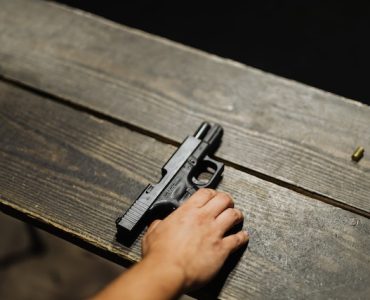If you have recently purchased a new building, you may wonder what the different fire protection systems NYC are and which ones are best for your facility. Passive fire protection systems are just as effective as active systems and can help to prevent smoke and fire from spreading throughout the building. Passive systems can also be combined with dynamic systems for the best protection.
Active
An Active fire protection system can deliver chemical powders, halogen-based gases, or inert gases to extinguish a fire. These systems are often installed to protect control panels or switch rooms. While Halons have been avoided due to their harmful effects on the ozone layer, other types of firefighting media can be used. The material safety data sheets should specify the appropriate media for each application.
Passive fire systems are largely ineffective unless they are installed throughout a building. It is because they can be hard to inspect and can have connection points with adjacent assemblies. As a result, maintaining them is a constant battle – mainly if they’re installed on corridor walls. Moreover, new electrical outlets and cables often require installation in these walls. Thus, passive fire protection systems may not be sufficient to protect an entire building. However, these systems are highly effective in certain situations.
Passive
Passive fire protection is an important safety measure that protects buildings against the spread of flames. This kind of protection is built into the fabric of a building and includes fire-resistant walls, floors, and doors. Various solutions are available, including cementitious fire spray and panels of reinforced concrete. Passive fire protection can prevent a fire from spreading to other building areas, but it is best to ensure that the fire-protection system is properly installed before construction.
Many building owners are concerned about passive fire protection, especially since it has become increasingly important for business owners. Many fires in India have prompted public outrage over delayed firefighting operations for no apparent reason. The fire departments and media often blame the delay on the lack of active fire systems. Moreover, passive fire protection is seldom mentioned in old news reports. Because of this, many false allegations have been made against passive fire protection.
Chemical
A chemical fire protection system is designed to contain a blaze and keep the premises as safe as possible. A wet chemical agent is released into a building’s fire suppression system, combining with the grease to form a soapy layer that seals the fuel from oxygen. It allows the grease to cool to a temperature below auto-ignition. In addition to a wet chemical system, a building should have fire extinguishers mounted on walls and ceilings. There are many types of extinguishers, including those designed for Class A, B, and C fires. These systems can be liquid, powder, or gaseous.
For example, clean agents like Novec 1230 and FM-200 are highly effective at suppressing fire without compromising the environment. These systems also minimize the interruption of business operations. However, while firefighting agents can effectively suppress a fire, they may not be safe to use in many environments. That is why it is recommended that you research the environmental benefits and costs of different systems before deciding which is best for your business.
Inert
Inert fire protection systems use a gas, INERGEN(r), composed of 52% Nitrogen, 40% Argon, and 8% CO2. It mixes with the air in the room to extinguish the fire while keeping arterial blood oxygenated and the human brain functioning properly in conditions of low oxygen levels. This inert gas has many advantages, including its effectiveness, reliability, and ease of maintenance. For more information, see the product’s description.
Inert fire protection systems contain no odor, smoke, or fog and are safe to use in occupied spaces. The system’s components are also FM-approved.
CO2
Using CO2 as part of a fire protection system has several advantages. Not only is CO2 odorless and colorless, it is also non-conductive, non-corrosive, and leaves no residue. It is also an effective firefighting agent, particularly for large, flammable fires. Carbon dioxide is present in the atmosphere at a level of 0.03%. A CO2 fire protection system comprises a fixed supply of CO2, a piping network, and nozzles.
In Germany, for example, most carbon dioxide systems are equipped with automatic release of carbon dioxide into occupied spaces. Despite the potential for injury or death, an extensive search of fire-safety records reveals only one accident caused by CO2 during a nonfire event. Personal communications with various sources support this finding.
Standpipe
A standpipe system is a way to deliver firefighting water to areas of a building that are not accessible by a fire truck or hose. Because the standpipe can be installed in any direction, it eliminates the need to connect hundreds of feet of hose to a building. Standpipe systems are also available in different sizes, which can be useful for facilities not equipped with fire departments.
A standpipe is a permanent system that extends into the building from an outside source, usually near the road or driveway. It extends inside the building and is commonly located between floors in high-rise buildings. In some buildings, standpipes are installed horizontally so that firefighters can attach a hose directly to them. These systems also help protect the building from fire because they allow for faster egress. This overview of the fire protection system gives you an idea of the different types of standpipes.




